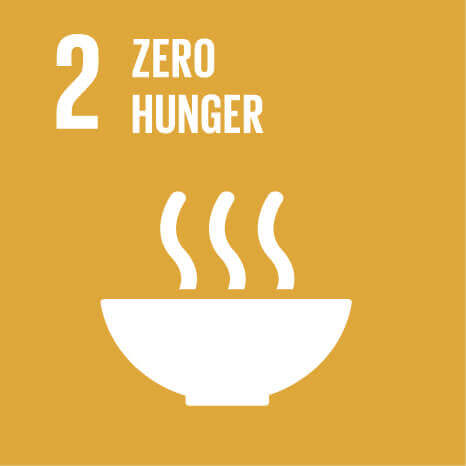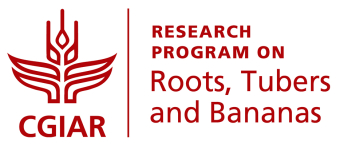Triple S allows more than 67,000 smallholders to produce sweetpotato seed in areas with a long dry season across 8 Sub-Saharan African countries
Published on: April 29, 2021, Submitted by Enrico Bonaiuti on: April 29, 2021, Reporting year: 2020
Triple S (storage, sand, sprouting) is a low-cost, practical method to store sweetpotato roots in sand to use as planting material. Triple S was developed by CIP with smallholder farmers taking into consideration youth groups to make healthy seed available on farms at the start of the rainy season. The technique has been validated in eight sub-Saharan African countries and has been scaled to 57,655 farmers (66.5% women) in Ghana and to 9,958 farmers (25% women) in Ethiopia (7).
Farmer irrigating planted sprouted roots in Northern Ghana
African smallholders have long found ways to find sweetpotato seed at the end of a long dry season. Some plant a second crop during the dry season in moist valley bottoms. Others water a few sweetpotato plants close to home to use as seed. A few have irrigation. The most common method is to collect planting material from volunteer plants, sprouting from roots that were missed during the previous harvest. But these roots leave roots are often attacked by weevils or diseases (6).
A method called Triple S (Storage in Sand and Sprouting) improves upon this traditional practice. Developed in semi-arid areas of Uganda, Triple S selects pest-free roots at harvest, layers them in a container of sand, and stores them at the farmstead for up to seven months. Some six to eight weeks before the rains start, the sprouted roots are planted in a nursery and watered twice a week, producing about 40 cuttings per root (6).
Farmers who have validated Triple S in eight countries (4, 5, 6) have found that planting early, in the sand allows them to have seed ready to plant when the rains begin, which increases yields by 25% to 300% (1). Women farmers find Triple S especially easy to manage (2). Farmers from Ethiopia to Ghana to Mozambique are now adapting Triple S to their own, local conditions (6). This low-cost, knowledge-based technology enables farmers to adapt to semi-arid areas climate change. Triple S can also be used to add two to four months of storage life to the larger roots that the farm family will eat, so Triple S helps smallholders improve their food security (6).
In countries with a long dry season, sweetpotatoes become scarce, and expensive, only to become abundant and cheap at harvest. Finding seed (planting material) in the dry season can also be a challenge, so extending the shelf-life of roots is crucial for farmers (2).
In sub-Saharan Africa farmers often obtain sweetpotato planting material from volunteer plants that grow from roots overlooked during the previous harvest. However, the roots sprout only when it rains and vines are not available for several weeks. Roots that sprout in distant fields may be eaten by animals or become weevil-infested. To solve these problems, researchers and farmers have developed a system of storing seed by covering roots in the sand and then planting and watering them before the rains start. The Triple S System (storage, sand, sprouting) makes the roots sprout and produces large amounts of planting material before the start of the rainy season (3).
Triple S was inspired by a local practice in Uganda, where farmers planted roots 10 cm deep in irrigated or wet areas. Those roots watered for 10 weeks produced more vines. Researchers found that roots stored in dry sand in a roofed building survived especially well and produced many cuttings (1). Triple S was validated by farmers in the Lake Zone of Tanzania, which has a harsher climate than Uganda. Triple S gave farmers convenient, abundant seed (vines) (1).
On-farm trials in Malawi and northern Ghana showed that sweetpotato roots could be stored in the sand for 6.5 months. Triple S prevented losses due to shriveling, termites, rats, and Java black rot. Sprouts could simply be removed and the roots returned to storage. Women favored found Triple S easy to manage (2).
Triple S has been validated in eight countries and is being scaled significantly in Uganda, Ethiopia, and Ghana, with support from RTB (4, 5).
Stage of Maturity and Sphere of influence
-
Stage of Maturity: Stage 1
-
Contributions in sphere of influence:
1.3.4 - More efficient use of inputs
1.4.2 - Closed yield gaps through improved agronomic and animal husbandry practices
Acknowledgement
Projects
-
SASHA II: Sweetpotato Action for Security & Health in Africa
























